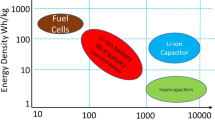Abstract
The rise of electric vehicles (EVs) and hybrid electric vehicles (HEVs) has resulted in increases in battery toxic waste. Although the powering and capacity characteristics of batteries deteriorate after use in EVs and HEVs, they usually retain enough potential for reuse as power sources in home energy systems, whose power requirements are much lower than those of EVs and HEVs. This study proposes an active cell equalizer that balances the state of charge (SOC) of nickel–metal hybrid (NiMH) batteries recycled from HEVs. In the proposed cell equalizer, two different circuits, e.g., a generation control circuit (GCC) and a power-decoupling circuit are integrated. Excessive energy is automatically transferred from a high-SOC cell to a low-SOC cell through the GCC. The power-decoupling circuit lowers the power pulsation caused by the single-phase DC/AC inverter. This reduces the low-frequency ripple current flowing into the battery pack, ensures safe operation and prolongs the lifecycle of the batteries. A prototype circuit with a three-stage battery pack is implemented in the discharging state and the obtained experimental results are analyzed to verify the equalizer functionality.
















Similar content being viewed by others
References
Tate, E.D., Harpster, M.O., Savagian, P.J.: The electrification of the automobile: from conventional hybrid, to plug-in hybrids, to extended-range electric vehicles. SAE Int. J. Passeng. Cars Electron. Electr. Syst. 117(7), 156–166 (2009)
Vidyanandan, K.V.: Overview of electric and hybrid vehicles. In: Energy Scan, vol. 3, pp. 7–14. A House Journal of Corporate Planning, NTPC Ltd., India (2018)
Iclodean, C., Varga, B., Burnete, N., Cimerdean, D., Jurchis, B.: Comparison of different battery types for electric vehicles. In: Proc. IOP Conference Series: Materials Science and Engineering, pp. 1–10 (2017)
Abdin, Z., Khalilpour, K.R.: Polygeneration with Polystorage for Chemical and Energy Hubs, Chap. 4. Academic Press, Cambridge (2018)
Hande, A., Stuart, T.A.: A selective equalizer for NiMH batteries. J. Power Sour. 138(1–2), 327–339 (2004)
Jeon, S., Yun, J.-J., Bae, S.: Active cell balancing circuit for series-connected battery cells. In: Proc. 9th International Conference on Power Electronics–ECCE Asia, pp. 1182–1187. Seoul, Korea (2015)
Gokdag, M., Akbaba, M.: An active battery cell balancing topologies without using external energy storage elements. In: Proc. ICMSAO, pp. 1–5. Istanbul, Turkey (2015)
Muller, T., Friedrich, B.: Development of a recycling process for nickel–metal hybrid batteries. J. Power Sour. 158(2), 1498–1509 (2006)
Randell, P.: Waste lithium–ion battery projection. Randell Environmental Consulting Pty Ltd, Victoria (2016)
Sun, Y., Liu, Y., Su, M., Xiong, W., Yang, J.: Review of active power decoupling topologies in single-phase systems. IEEE Trans. Power Electron. 31(7), 4778–4794 (2016)
Serban, I., Marinescu, C.: Active power decoupling circuit for a single-phase battery energy storage system dedicated to autonomous microgrids. In: Proc. IEEE International Symposium on Industrial Electronics, pp. 2717–2722. Bari, Italy (2010)
Phung, T.H., Crebier, J.C., Lembeye, Y.: Voltage balancing converter network for series-connected battery stack. In: Proc. IEEE IECON, pp. 3007–3013. Montreal, Canada (2012)
Piao, C., Wang, Z., Cao, J., Zhang, W., Lu, S.: Lithium–ion battery cell-balancing algorithm for battery management system based on real-time outlier detection. Math. Probl. Eng. 2015, 1–12 (2015)
Daowd, M., Omar, N., Bossche, P.V.D., Mierlo, J.V.: Passive and active battery balancing comparison based on MATLAB simulation. In: Proc. IEEE Vehicle Power and Propulsion Conference, pp. 1–7. Chicago, IL, USA (2011)
Qi, J., Lu, D.D.-C.: Review of battery cell balancing techniques. In: Proc. AUPEC, pp. 1–6. Perth, Australia (2014)
Park, S.-H., Kim, T.-S., Park, J.-S., Moon, G.-W., Yoon, M.-J.: A new battery equalizer based on buck-boost topology. In: Proc. IEEE 7th International Conference on Power Electronics, pp. 962–965. Daegu, Korea (2007)
Phung, T.H., Crebier, J.-C., Chureau, A., Collet, A., Nguyen, T.V.: Optimized structure for next-to-next balancing of series-connected lithium–ion batteries. In: Proc. IEEE APEC, pp. 1374–1381. TX, USA (2011)
Li, H., Zhang, K., Zhao, H., Fan, S., Xiong, J.: Active power decoupling for high-power single-phase PWM rectifiers. IEEE Trans. Power Electron. 28(3), 1308–1319 (2013)
Ohnuma, Y., Orikawa, K., Itoh, J.-I.: A single-phase current source PV inverter with power decoupling capability using an active buffer. IEEE Trans. Ind. Appl. 51(1), 531–538 (2015)
Tang, Y., Blaabjerg, F.: Power decoupling techniques for single-phase power electronics systems—an overview. In: Proc. IEEE ECCE, pp. 2541–2548. Montreal, Canada (2015)
Yamaguchi, S., Shimizu, T.: Single-phase power conditioner with a buck–boost-type power decoupling circuit. IEEJ J. Ind. Appl. 5(3), 191–198 (2015)
Shimizu, T., Hirakata, M., Kamezawa, T., Watanabe, H.: Generation control circuit for photovoltaic modules. IEEE Trans. Power Electron. 16(3), 293–300 (2001)
Acknowledgements
This research was partially support by “Higher Engineering Education Development” Project—Research and Development of Power Electronics and Industrial Automation (J14C16).
Author information
Authors and Affiliations
Corresponding author
Appendix
Appendix
A comparison of the proposed cell equalizer with the different cell-balancing methods in terms of the balancing speed, equalization accuracy, number of components and control complexity is given in Table 5. As mentioned in an early section of this paper, the active power-decoupling circuit is combined with the existing cell-equalizing circuit in this study. Although the equalizing speed, time required to reach the complete equalization, and number of components are the same as those of the buck–boost type cell-balancing circuit, the proposed circuit can achieve the safe utilization of the retired batteries since it can reduce the power pulsation caused by the single-phase inverter while equalizing.
Rights and permissions
About this article
Cite this article
Bat-Orgil, T., Dugarjav, B. & Shimizu, T. Cell equalizer for recycling batteries from hybrid electric vehicles. J. Power Electron. 20, 811–822 (2020). https://doi.org/10.1007/s43236-020-00064-0
Received:
Revised:
Accepted:
Published:
Issue Date:
DOI: https://doi.org/10.1007/s43236-020-00064-0




